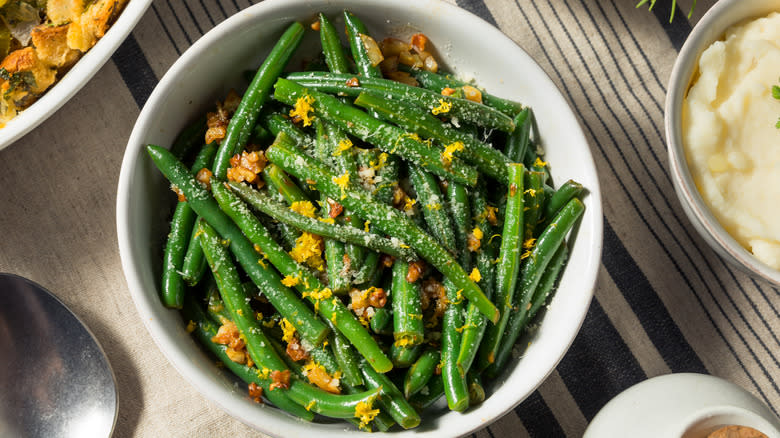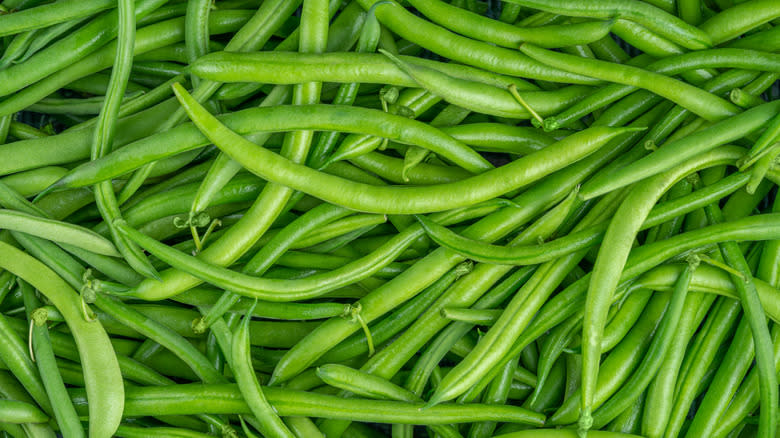How To Blanch Green Beans For The Perfect Snap

You can do so many things with green beans, from making them with lemon and garlic to cooking up a classic green bean casserole, and even pickling them -- there are plenty of ways to add different flavors. No matter what you do with these beans, they should start with their texture and natural flavor intact, since it's that crisp snap and sweet, earthy taste that makes them great in the first place. The key to achieving that is to blanch them.
Blanching means boiling vegetables for a short time and then submerging them in ice water immediately. You can go the traditional route and prepare an ice bath or you can take a shortcut to blanching by running them under cold water. The shock of cold immediately after the boil halts the cooking process, which also stops enzyme activity that leads to fading color, texture, and flavor. Blanching locks in all of those characteristics at their peak, and even maintains green beans' nutrients.
You'll need a pot of boiling water for the initial cook time, and then a large bowl filled with six cups of ice plus cold water. Boil the beans with a pinch of salt for five to seven minutes for a just-right snap. If you are going to further cook the beans in any way, only boil for three to five minutes. Strain the beans and put them in the ice for two minutes.
Read more: 25 Types Of Potatoes And When To Use Them
Tips For The Perfect Blanching

Standard green beans, the French breed known as haricots verts, wax beans, and flat beans are the best contenders for blanching. Some varieties won't fare as well -- long beans can actually take on too much water in the boil and get soggy. Before blanching any type, remember to trim them. Twist those stems off, or take a chef's knife to a small, lined-up pile.
While you can further cook blanched green beans in any other preparation, they're also ready to eat right away. Blanched green beans are a better bet for a snack or for places where you might use them raw, like in a salad. Green beans contain antifungal, natural-insecticide proteins called lectins, and they're not meant for our digestive systems. If you eat a lot of raw green beans, you could feel discomfort like bloating or nausea. Blanching gives you all the flavor and snap of a raw green bean, with an added layer of safety.
If you are going to cook blanched beans in another way, you can store them in the fridge if you're not doing so right away. Because blanching preserves texture and flavor, it gives your green beans a little more life. They'll last four to five days refrigerated in an airtight container, or you can freeze them: Dry them, arrange them on a baking sheet to freeze for one hour, then transfer them to a sealed container. This way, blanched green beans will last up to six months.
Read the original article on Tasting Table.

 Yahoo Lifestyle
Yahoo Lifestyle 
